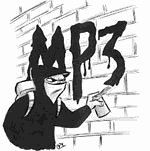THE COUNTDOWN CONTINUES: Less than six months to go before the computer industry’s two-digit oversight sends everyone into their basements with their shotguns, canned beans, and festering millennial fears. Not me, though. I’ve made my digital daily affirmation by clicking from site to site, reading cushiony Y2K-readiness disclosures. My electric company has tested 85 percent of its mission-critical systems, and everything’s lookin’ good.
But my friends at Microsoft urged me to look inward, or at least at my own Windows 98 operating system. What will happen to my home computer when those fateful last ticks of ’99 explode into the first burst of the 21st century? It turns out to be a vexing question, and it prods me to let my callused fingers do the walking through the technological trap door known as Microsoft’s Year 2000 Resource Center (http://www.microsoft.com/y2k/).
Here, a smiling Bill Gates welcomes me with carefully veiled words about the situation at hand. Namely, my computer could self-detonate like a Get Smart gadget in a little more than five months hence—unless I take the Microsoft guided plunge into Y2K readiness.
The Resource Center is a snappy-looking site splashed with soothing royal blue and gold and peppered with links to articles, white papers, compliance tools, and assessments of individual software products. Faced with all these choices, I decide to start with Seminar Online, in which Rich Kaplan, the director for Y2K Readiness at Microsoft, will teach me how to get my PC Y2K ready.
Rich, a gregarious-looking fella with a broad smile and a muted red tie, will lead me on a 38-minute, 37-second tour (actually a digital slide presentation). But my six-month-old PC fails to connect to the server, and I’m left looking longingly at Rich. I opt to hit the hyperlink to the “overview” section. Here, Rich presides over a description of this particular seminar. It’s aimed toward “end users,” which further investigation reveals to be Microsoft code for “casual users” (as in, doesn’t work at a software company or at Microsoft’s own Redmond campus). Also, it’s a 100-level course, Rich says, helpfully advising: “Compare it to an article in a wide-audience, easy-read newspaper such as USA Today.” Uh-huh. He goes on to equate the tougher 200 level with The New York Times, the 300 level with Scientific American, 400 with the New England Journal of Medicine, and 500 with a doctoral dissertation. Level 600, I muse, would be like trying to make your PC Y2K ready.
Rich can’t help me, so I decide to return to the Resource Center. The Microsoft Year 2000 Product Analyzer has a nice ring, so I click. And I download. Four minutes later, the file’s safely stored on my desktop. Another link beckons: an updated version of the Analyzer. I click again, and a list of code appears, including thoughtfully named items such as “Barney goes to the circus” and “Fun on the farm with Barney.” (In case it isn’t self-evident, this is why programmers get pigeonholed as geeks.) With visions of a bloated purple dinosaur cavorting among more mundane creatures, I’m still left wondering whether my files and software will take the virtual voyage back to 1900 come the new year. To hell with the Resource Center, Rich, and the Analyzer. I’m gonna try my luck with the customer support line. That’s right: Calling an actual human—assuming any work at Microsoft—on the telephone.
Soon after a nameless, monotone female operator picks up, I’m barraged with questions. What’s my address? What’s my e-mail? Phone number? Favorite Brazilian rock musician? A-ha! I’m not defending my computer from a millennial meltdown; I’m feeding my personal information into some juggernaut of a database! Then I’m put on hold. Smooth jazz—until Mark from the Microsoft update site support comes to the rescue and tells me that the version of the Analyzer that I’m working with has bugs of its own. “There are some known issues,” he says, unfurling another euphemism.
Mark talks me through to the activation of the Analyzer that I’ve already downloaded, and it turns out that my Windows 98 OS needs updating, as does my Internet Explorer 4.0 and a few other items. The first step, he instructs, is to download Explorer 5.0, and then I can download a Windows 98 update. In other words, the prescription is for more Microsoft products. How do you want to market today?
What would happen, I fire back, if I were to ignore all the Y2K warnings and insinuations? Calmly, Mark responds, “There are some minor date handling issues with Windows 98.” That’s it? A few flubbed numbers, maybe a minor mishap come Leap Year 2000? “From what I’ve been told, it won’t affect functionality,” Mark coos.
Well, then. I believe I’ll stop worrying and get back to my reading. I wonder what’s in the latest issue of the New England Journal of Medicine.






